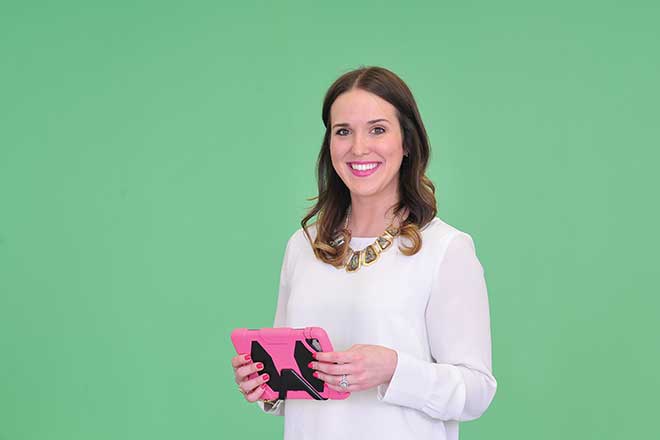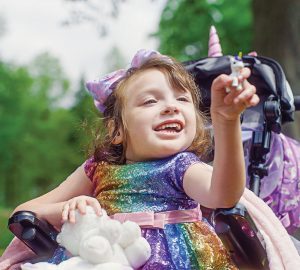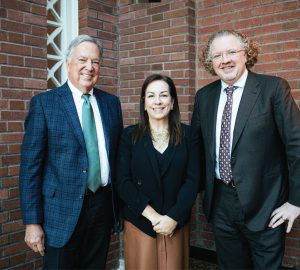It might be limited eye contact or a reluctance to speak. It could be a narrow food interest or a resistance to play. Autism Spectrum Disorder (ASD) presents differently from person to person, but diagnosis often is based on delays in communication and social skills, and an inability to learn from the environment. Because each case is unique, the most effective treatment also is individualized, says Liz Kinsella, program director and board-certified behavior analyst at Thrive Autism Solutions, recently opened in Olivette. “We build a treatment plan around whatever a family is struggling with,” she notes. Autism may manifest in behavioral excesses or repetitiveness (lining up toys, talking about one thing, only eating one brand of chicken nuggets), but Kinsella says it can be difficult to diagnose because the diagnosis tends to be based on what isn’t present rather than what is. “We look for milestones that aren’t reached, skills a child should have but doesn’t,” explains Philip Abbenhaus, Thrive CFO and vice president.
 Thrive offers in-home and clinic-based Applied Behavior Analysis (ABA), an approach that uses scientifically validated techniques to teach a child. Currently the only behavioral treatment for autism endorsed by the U.S. Surgeon General and the NIH, it combines close observation with positive reinforcement. “We take overwhelming things and break them down into small, manageable steps,” Kinsella says. An example of this might be interrupting the circuit of repetitious play by gently introducing a different toy. “If the child only plays with trains, we might start building ramps, or putting on toy passengers,” Kinsella explains. She says sign language sometimes is effective. “We might physically help them make the sign for ‘eat’ and then immediately give them food,” she notes. “We repeat this process over and over, and in five days, the child can ask for food by signing on his own.” Being able to communicate reduces frustration and cuts down on tantrums, Kinsella says.
Thrive offers in-home and clinic-based Applied Behavior Analysis (ABA), an approach that uses scientifically validated techniques to teach a child. Currently the only behavioral treatment for autism endorsed by the U.S. Surgeon General and the NIH, it combines close observation with positive reinforcement. “We take overwhelming things and break them down into small, manageable steps,” Kinsella says. An example of this might be interrupting the circuit of repetitious play by gently introducing a different toy. “If the child only plays with trains, we might start building ramps, or putting on toy passengers,” Kinsella explains. She says sign language sometimes is effective. “We might physically help them make the sign for ‘eat’ and then immediately give them food,” she notes. “We repeat this process over and over, and in five days, the child can ask for food by signing on his own.” Being able to communicate reduces frustration and cuts down on tantrums, Kinsella says.
Parents also receive behavioral training. “How parents interact with their child is very important,” she says, referring to ways the family can encourage things like eye contact. “Instead of simply giving the child a granola bar, we suggest parents hold it up to their eyes so they have to look at them first.”
According to the Centers for Disease Control and Prevention (CDC), more and more youngsters are being diagnosed with ASD, but it is unclear how much of this increase is due to a broader definition of ASD and better diagnosis. In 2010, the CDC estimated that 1 in 68 children had some form of ASD. (Boys are five times more likely to have it than girls.) “Our awareness of what places someone on the spectrum has changed greatly over the past 15 years,” Abbenhaus says. “That may be because we now know there are effective ways to treat it.” Kinsella agrees: “We see things differently now, and that quirky uncle who never married or held down a job is being viewed through a new lens.”
Dr. David Callahan, a pediatric neurology specialist at Washington University Clinical Associates, says many children with autism can benefit from 25 to 40 hours every week of intensive ABA, interventions for a period of one to three years to achieve maximum effectiveness. While therapy at any age is beneficial, he adds the younger a child is when treatment begins, the better. Thrive’s clients range in age from 17 months to 17 years.
Pictured: Thrive program director Liz Kinsella
Photo: Bill Barrett
Thrive Autism Solutions offers scientifically validated techniques to treat children with autism spectrum disorders. Treatment takes place in the home or at the Olivette clinic. Pictured on the cover: Liz Kinsella, Thrive program director, and Kaylie Carnes, behavior technician, work with children in an intimate setting. For more information, call 314.932.2402 or visit thriveasd.org.








